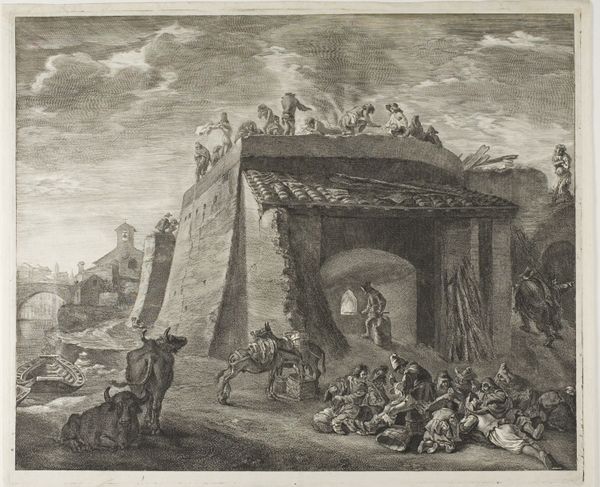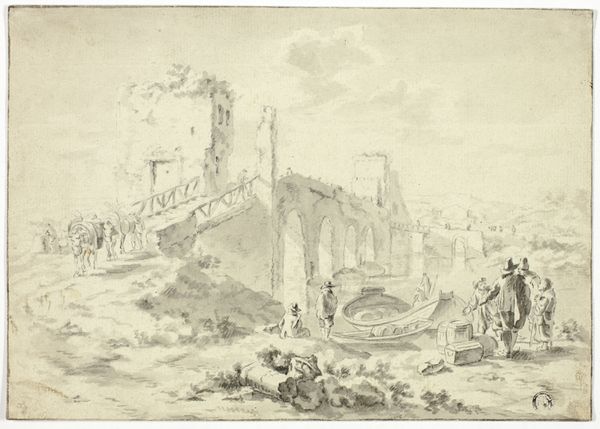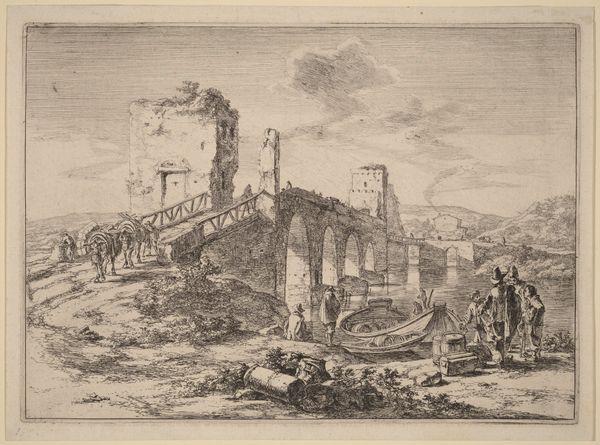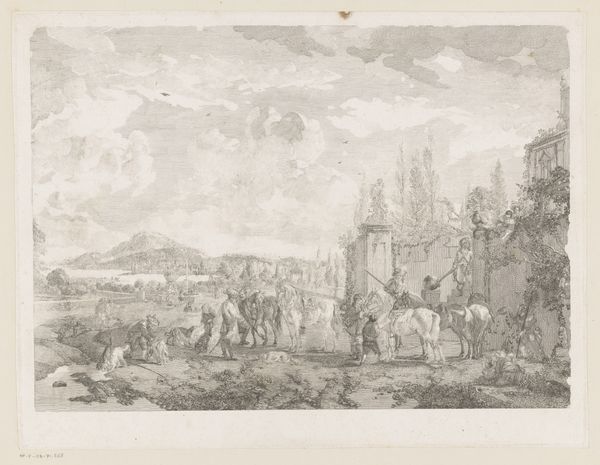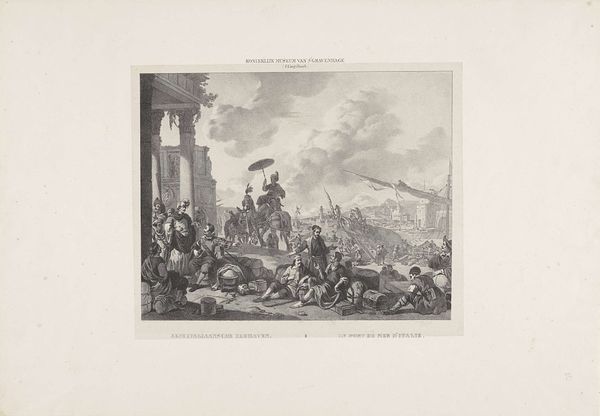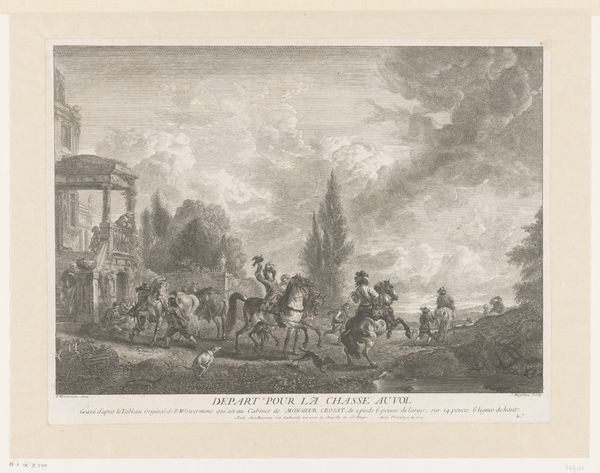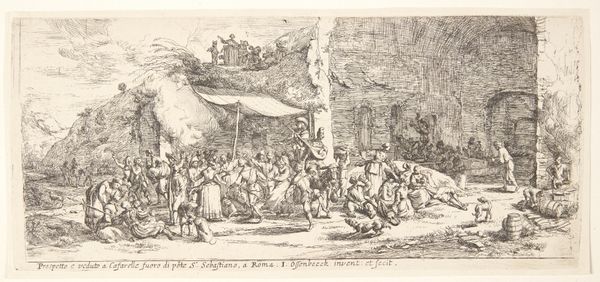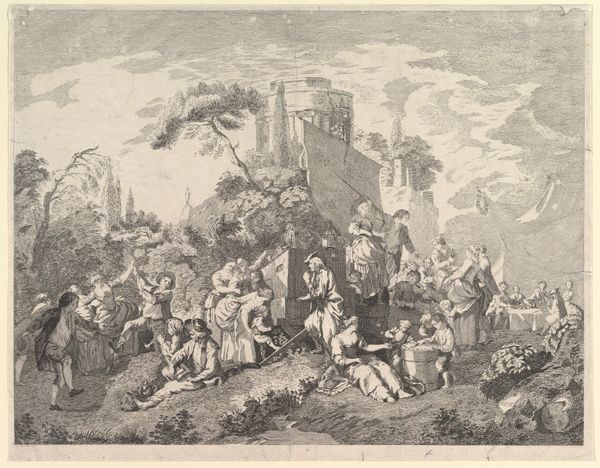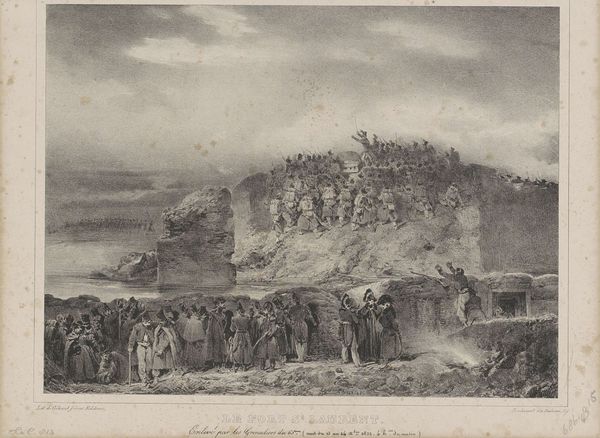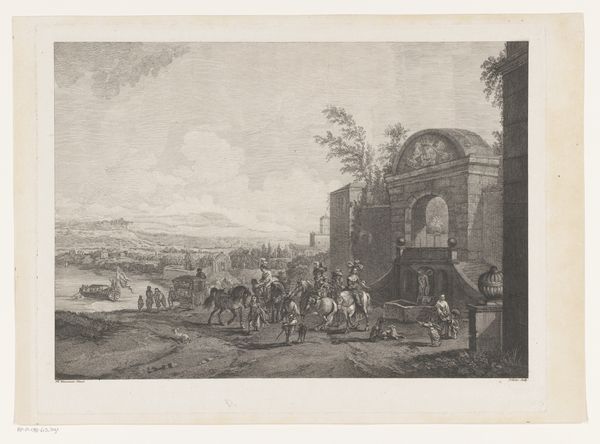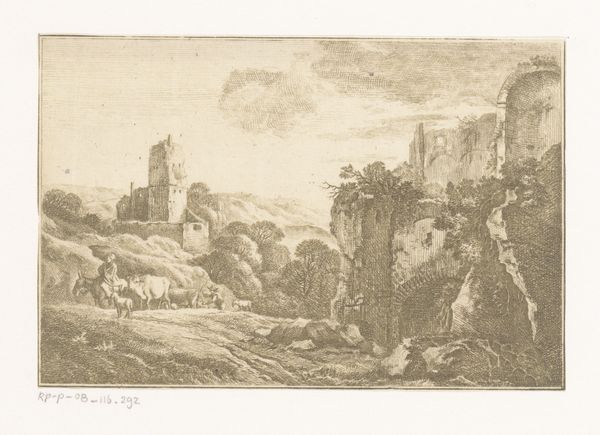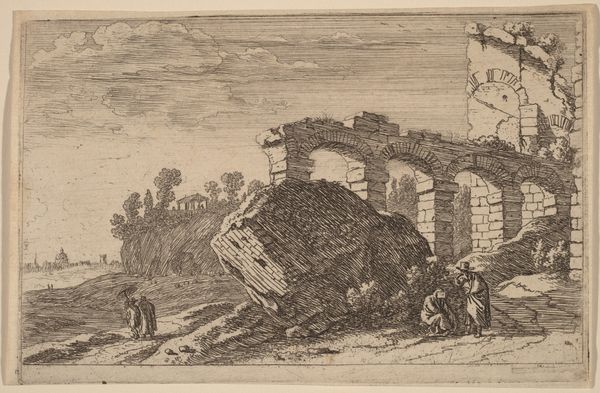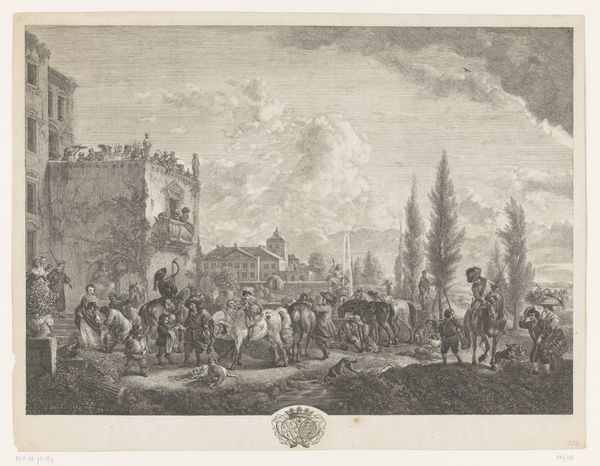
print, engraving
#
pencil drawn
#
dutch-golden-age
# print
#
pencil sketch
#
landscape
#
pencil drawing
#
genre-painting
#
engraving
Dimensions: height 322 mm, width 387 mm
Copyright: Rijks Museum: Open Domain
Curator: So, what’s your immediate impression of this scene? It’s entitled “Grote kalkoven”, or “Large Limekiln.” Editor: A rather bleak depiction of labor and rest! It feels weighted with…dust. Does that make sense? Dust and toil. Curator: It does. The print, currently housed at the Rijksmuseum, is from sometime between 1638 and 1706, and was created by Cornelis Visscher, and the medium is engraving. Editor: Limekilns weren't known for their glamour. I'm wondering, what could a limekiln symbolize at the time, beyond its obvious utilitarian function? It is very gritty. Curator: The limekiln could certainly symbolize transformation. The intense heat transmutes raw limestone into lime, a crucial building material. In a broader context, fire, often linked to kilns, symbolizes purification, but also destruction. Editor: Oh, purification and destruction in one messy industrial package! It's such a raw image. People milling all around. So many resting down the bottom right side and busy at the top. There are symbolic divides across the different vertical levels within the imagery. A clear separation between those that toil up top and those that are left below. Curator: Precisely. The figures atop the kiln are actively engaged in the transformative process, almost alchemists, whereas the ones resting can symbolize acceptance and passive living. There’s almost an elemental relationship here: Earth giving way to Fire. Editor: True, or earth as in our place of dwelling, with fire as an existential element; transformation, and then acceptance that transformation will, invariably happen. A somber observation. Sobering really, given we're looking at, essentially, dust. It also just hit me that the image’s stark monochrome echoes the ash and grit of the scene itself. The engraver truly captures a certain melancholy associated with human effort. Curator: Visscher offers us an intimate, and honest slice of 17th-century labor. There are certainly cultural connotations—industry—that speak volumes beyond just a snapshot. Editor: Exactly! A powerful image…with something elemental about it, too. As we were saying. Dust to dust!
Comments
No comments
Be the first to comment and join the conversation on the ultimate creative platform.
